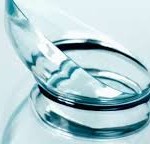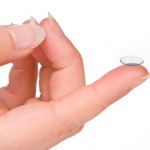All You Need to Know About Contact Lenses for Kids

A lot of children already have vision problems at such a young age, and they deserve the best solutions to improve their eye health so they can enjoy their childhood. Fortunately, the amazing benefits of contact lenses aren’t just exclusive to adults. Just like eyeglasses, some contacts are designed for the younger market. However, it goes without saying that those products come with risks. To avoid harming the delicate eyes of a child, we’re about to share all the information you need regarding contact lenses for kids.
When to Give Contact Lenses to a Child
Contact lenses are crucial if the child has an active lifestyle. Since eyeglasses aren’t advisable for athletes and outdoor enthusiasts due to limited peripheral vision, inconvenience, and safety risks (e.g., broken glass and frame after impact), contacts are perfect for children participating in any sport or dynamic activity.
It’s also best to consider letting children wear contact lenses if they’re not comfortable wearing glasses. We’re not just talking about the literal feeling of comfort; contacts can significantly improve the self-esteem of kids, making them more confident in school.
However, if the child is still not responsible enough to take care of his own contact lenses, you have to think twice. Only give him contacts if he’s proven to be consistent in following any kind of instruction at home, doing chores, and maintaining cleanliness in his room. That kind of positive behaviour usually starts when the child reaches eight years old. Although, most optometrists agree that 10 years old is the most appropriate age.
What’s next if you’re already certain to provide a child with contact lenses? You should bring him with you for a consultation with an optometrist.
If there’s an urgent need for contacts and the kid isn’t mature yet, a good solution is to resort to daily disposable contacts to eliminate the requirement of storing the lenses every night before bedtime. One-day lenses are generally more expensive, but children tend to appreciate the convenience of throwing their lenses every after use.
But, it’s still the parent’s or guardian’s responsibility to teach the child how to use contact lenses. Also, kids should be reminded all the time that they can remove the lenses once they feel uncomfortable. A big factor contributing to comfort is the fit so make sure you deeply understand and remember all the optometrist’s instructions before buying contacts.
Now, is it possible for infants to need contact lenses? It turns out that optometrists tend to prescribe special contacts for babies with congenital cataracts.
Meanwhile, children who should stay away from contact lenses as much as possible are the ones with seasonal allergies. A child might not be able to stop himself from rubbing or touching his eyes when his contacts aggravate the irritation.
How to Place Contact Lenses in a Child’s Eyes
Here are the steps you need to follow in putting contact lenses in somebody else’s eyes, especially of an apprehensive child:
- Use warm water and soap in washing your hands.
- Dry your hands thoroughly with a lint-free towel (avoid paper towels).
- Make the child stand in front of you face-to-face.
- Slightly tilt the child’s head back.
- Tell the child to look straight and then upward a little bit (remind him to never lose focus even as you insert the lens).
- Extend your forefinger to hold the lens without pinching it (the lens should look like a tiny bowl on your finger).
- Instruct the child to slightly open his eyes wider (you may help him pull his upper or lower eyelid gently to widen the opening).
- Tell the child to blink once slowly before blinking normally.
To prevent the child from blinking too much during the process, don’t startle him with sudden movements. Don’t hover above him; instead, move a few steps to the side and slightly lower your body. Your shadow can affect his focus.
Another important tip is to take note of whether the lens is for the right or left eye. That’s why a storage case with labels is essential. Speaking of the case, see to it that the lenses are perfectly lubricated inside before insertion.
Contact lenses also availabe:
Two week disposable contact lenses
Contact lenses without prescription
Additional Tips
For cleaning, maintenance, safety, and other tips, check these out:
- Remind the child to never clean contact lenses with saliva and any type of water.
- Make sure the storage, disinfecting, or all-purpose solution used is safe for the child.
- Carefully teach the child how to use the solution aside from focusing on proper insertion and removal.
- As much as possible, check if the child isn’t wearing contact lenses before sleeping through the night.
- If you’re giving contact lenses to a teenager who frequently wears makeup, remind her to insert the contacts beforehand to avoid contaminating the lenses.
- Buy hypoallergenic skincare products for the child to avoid irritation near the eyes.
Conclusion
Contact lenses are perfect for sporty and responsible children. They can help the child perform better during activities thanks to the absence of inconvenient eyeglass frames. And, since contacts require careful handling, only kids who know how to follow more complicated instructions can use them.
During the first weeks of use, assist the child in inserting contact lenses no matter how smart and responsible he is. Wearing contacts for the first time can easily trigger irrational fear or anxiety despite careful preparation.
Lastly, teach the child every single thing he needs to know about owning contact lenses. Tell him everything right from the insertion and removal process up to the cleaning, maintenance, and storage tips.
Where to Buy Contact Lenses for Younger Users
We at Contact Lenses 4 Us proudly include the Acuvue 1-Day Define Natural Shimmer contacts in our wide range of products. It’s highly recommended for teenagers to help them have an easier time at school. As a plus, it’s the daily disposable type, very ideal for busy students. And, the exciting part, it can give a subtle improvement to any eye colour. Expect the best no-filter selfies with this product!
Order now and we’re going to ship the product locally or internationally. With us, you won’t need any prescription at all!
Read also:
The Advantages and Disadvantages of Daily Disposable Contact Lenses

ACUVUE OASYS with Transitions
ACUVUE® OASYS with Transitions Can’t stand sunny days and computer tasks any longer? Well, we can’t blame you; constantl...
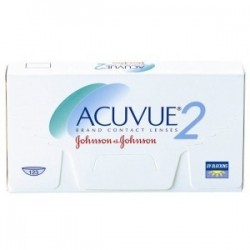
ACUVUE 2 contact lenses
Acuvue 2 contact lenses The Acuvue 2 is one of the best selling disposable contact lens in the market. It is a UV blocking ...
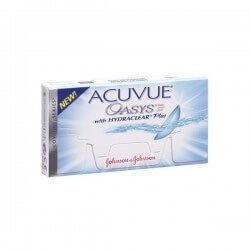
ACUVUE OASYS contact lenses no prescription
Acuvue Oasys: Ultimate Comfort with HYDRACLEAR PLUS Discover the comfort of Acuvue Oasys contact lenses, empowered by HYDRACL...
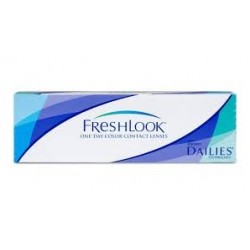
Freshlook One Day contact lenses
Contact lens wearers who opt for daily colored disposable contacts should consider Freshlook One Day contact lenses. Made by ...

